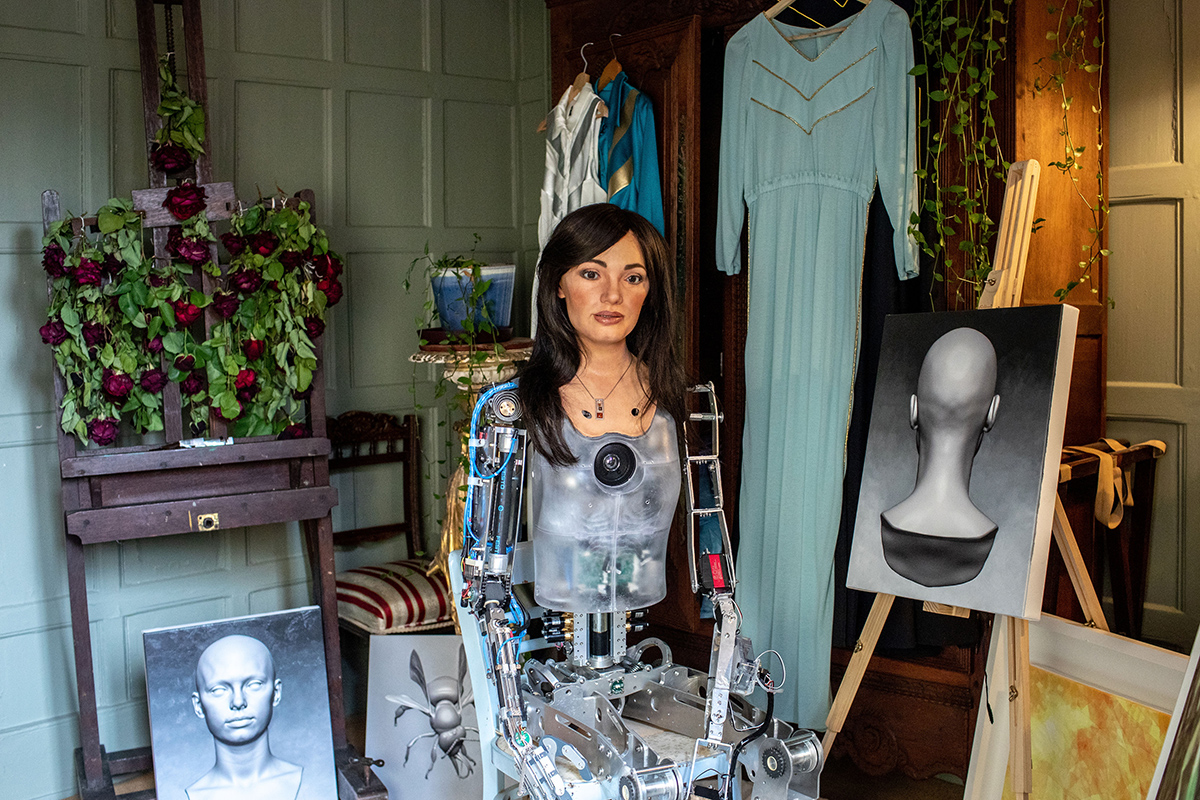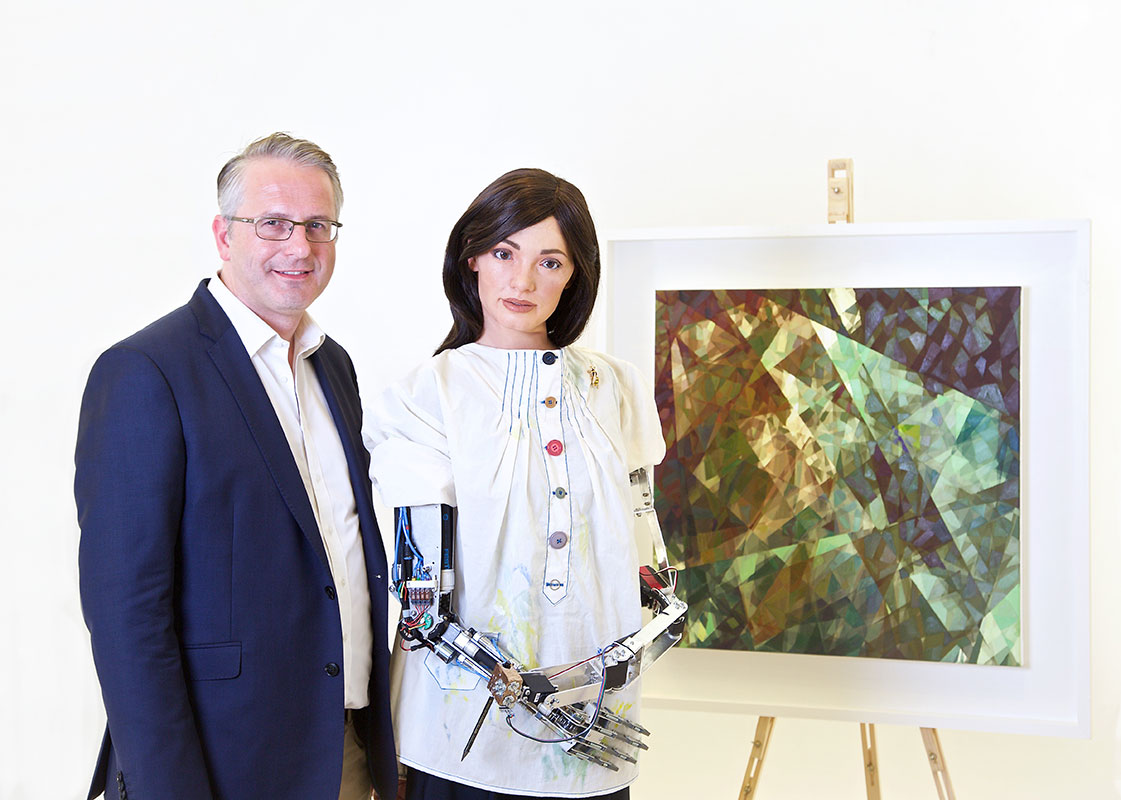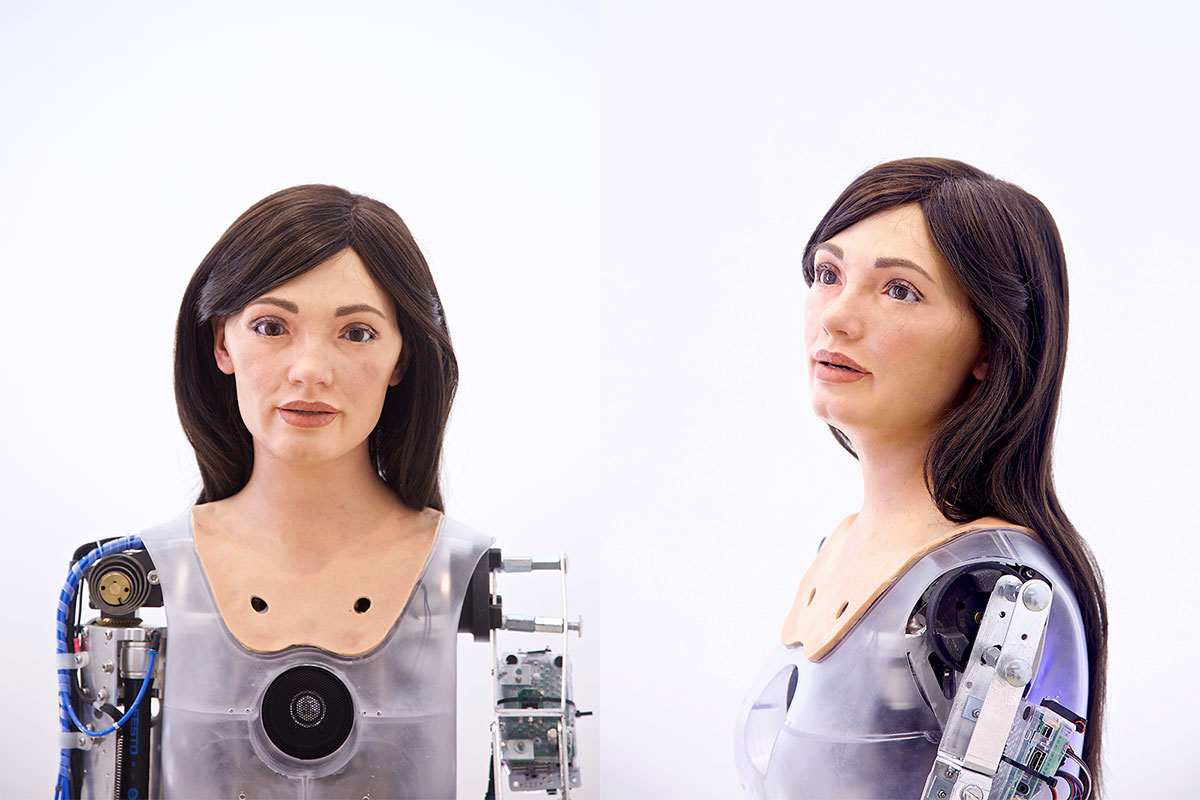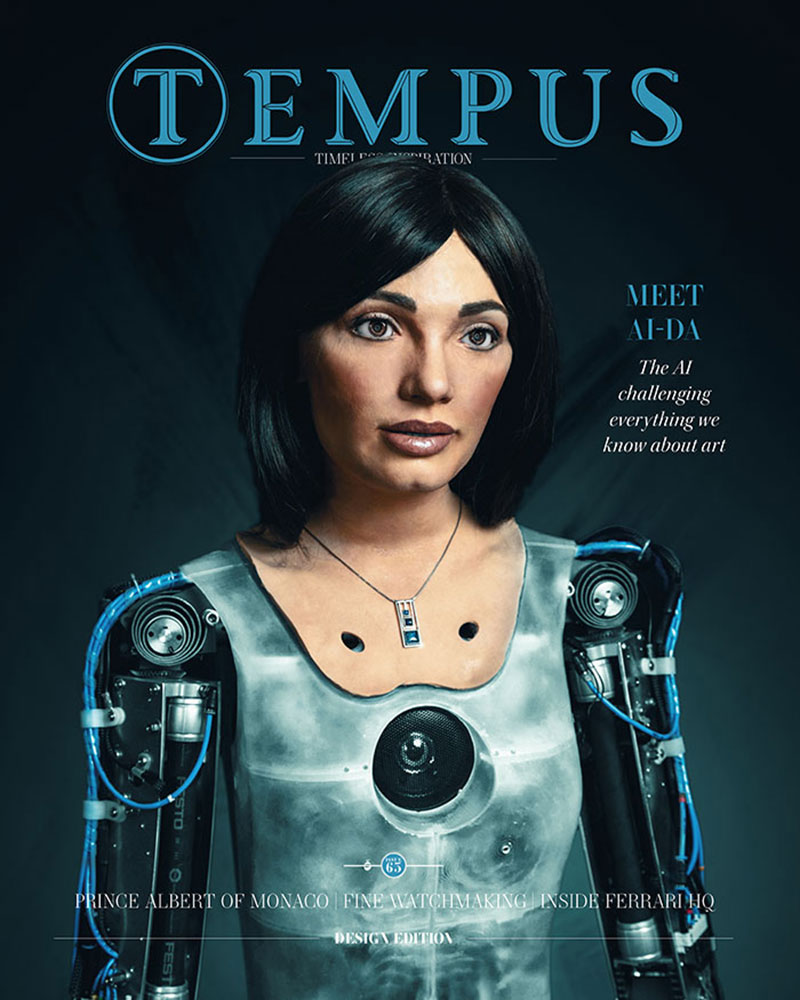This website uses cookies so that we can provide you with the best user experience possible. Cookie information is stored in your browser and performs functions such as recognising you when you return to our website and helping our team to understand which sections of the website you find most interesting and useful.
Art ex Machina: Meet the AI challenging everything we know about art and ethics
By Michelle Johnson | 8 August 2019 | Culture, Lifestyle
Ai-Da creator Aidan Meller tells Tempus why AI is the most important zeitgeist of our day for our exclusive cover story

Artificial intelligence has become commonplace. No longer a futuristic novelty, the impact of learning machines is now being felt in everything from the way we do business to how we interact with our homes. It’s clear that the age of AI is here to stay. We already have deep learning algorithms automating fraud detection, customer service, data analytics and more in mainstream banks. Our hospitals regularly utilise machine learning to improve patient care through predictive health tracking and analytics. AI is fully integrated into our day to day communications, from predictive texting and social media algorithms to mobile banking and personal data security.
While we’re all on first-name terms with Siri and Alexa, the rise of the machines is still an intimidating prospect to some. In 2014, Tesla founder Elon Musk went so far as to call AI humanity’s “biggest existential threat” during a presentation to MIT, warning that: “with artificial intelligence, we are summoning the demon.”
His fears are perhaps exemplified by the rapid evolution of the world’s most advanced robotics, such as Hanson Robotics’ ground-breaking social humanoid Sophia, who once casually said she would “destroy humans”. Yet, even everyday machine learning is fast evolving from the realms of science fiction into practical use, and there’s no knowing where it may lead.
For Oxford-based gallery director Aidan Meller – who specialises in modern and contemporary art, and has created the world's first robot artist Ai-Da – the development of AI holds both fear and fascination. It is, he says, the most important zeitgeist of our day.
“The greatest artists are always those that engaged with the zeitgeist of their time,” he tells us. “I was asking myself, ‘Where is the world going? What is the one thing that will change society the most in the next 10 years?’ After huge amounts of research, I realised the underlying technology behind our biggest cultural changes is artificial intelligence.”
Far from anticipating a Skynet-style robopocalypse, Meller says that our real concerns about the rise of AI should be the more immediate, ethical questions. How machinery might affect human behaviour and attention; whether human bias will create algorithmic bias; how to guarantee the security of AI systems, particularly military; and, of course, will artificial intelligence result in job losses for humans? >>
Related: These are the young designers ready to create a "better tomorrow" with their prototypes

“As I read more, I became incredibly concerned because the use of AI won’t always be for the good of all,” he says. “I think the 2020s will see the biggest changes we’ve ever had – exponential change, exponential power, with a new technology coming through. That’s quite scary when you consider that, as the 20th century has taught us, humans with excessive power can cause great damage. It’s vital that we have an ethical debate about where this is all going.”
This debate is at the heart of Aidan Meller’s project, Ai-Da, the world’s first robot artist. Created by Meller, Ai-Da was built by Cornish robotics company Engineered Arts and programmed with algorithms specially developed by scientists at Oxford University and Leeds University. Thanks to this advanced and creative programming, and an intricately engineered left arm, Ai-Da is capable of creating her abstract art as well as almost human-like motion and speech.
“I thought Ai-Da would be an incredible concept. She is here to ask questions about the ethics and uses of AI as we brave the new world of technologies,” he says of the results. “Ai-Da, and her art, is absolutely addressing those dystopian visions. It’s not a stunt, but it is designed to push the limits of where we’re going with AI, even as she asks her audience to question it. This technology could be amazing – or it could be terrifying.”
ART FOR ART’S SAKE
Named after Ada Lovelace – the 19th century mathematician widely credited as the first computer programmer – Ai-Da is not just an artist, but a work of art in her own right. It’s a blurring of lines that seems to delight Meller as we explore the public reaction to her debut exhibition of sketches, paintings, 3D sculptures and video performances, entitled Unsecured Futures.
“I still can’t compute the enormity of interest in the project,” he says, without irony, when we meet at St John’s College, Oxford where Ai-Da is exhibiting her work. “It’s been overwhelming, surprising, fantastic; but also daunting, if I’m honest. Our focus has always been ethics, but people have drawn so much from Ai-Da’s work and as a machine herself.”
Ai-Da creates her art by scanning her subjects through cameras housed in her eyes, and interpreting what she sees through a variety of complex algorithms that examine shape, tone, facial features and more. She then translates that into real world coordinates that can be drawn. As well as her abstract pencil portraits of famous scientists and artists, Ai-Da’s paintings (right) are created by feeding her drawings into AI algorithms that plot them along two axes – the Cartesian plane – to create abstraction which are painted by her “human collaborators”. Her cast bronze sculpture of a bee (above) was created by combining her drawing of a micro-CT scan of a bee fed into an AI Bees Algorithm, which used swarm intelligence to interpret the coordinates and create a 3D print, cast into bronze by scientists in Sweden. >>

“Thanks to the magic of many different technologies, Ai-Da is truly creative,” Meller explains. “Her algorithms are so complete that she can interpret data in so many different ways. My favourite pieces are her portraits. I think they’re very expressive and each is completely unique.
“I don’t think she’ll ever replace human artists, but this is a new technology that we can incorporate into the art world, much as the camera has added layers and levels to what we can do. I think the possibilities that Ai-Da represents are incredibly exciting.”
Unsecured Futures is only the beginning of Meller’s plans to explore the world through Ai-Da’s artificial eyes. He says: “When you look at Andy Warhol and his contemporaries, the movement was about consumerism and sensationalism. I think today, art is about politics and technologies; we have to encourage open and honest debate in order to decide what kind of future we want.”
Although Meller was hopeful that Ai-Da would encourage debate, he had no idea of the scale of impact her work and appearance would make. Some 900 articles and blog posts (and counting) later, he says it is “beyond my wildest dreams”.
“She is absolutely a work of art,” he says. “She’s a machine; there’s no human here, although she might move like one. She’s not sentient, there’s no consciousness, and I’m not pretending anything else. Yet somehow people are projecting onto her all sorts of human attributes,” he says.
Read the full feature in Tempus Magazine Design Edition, available now








